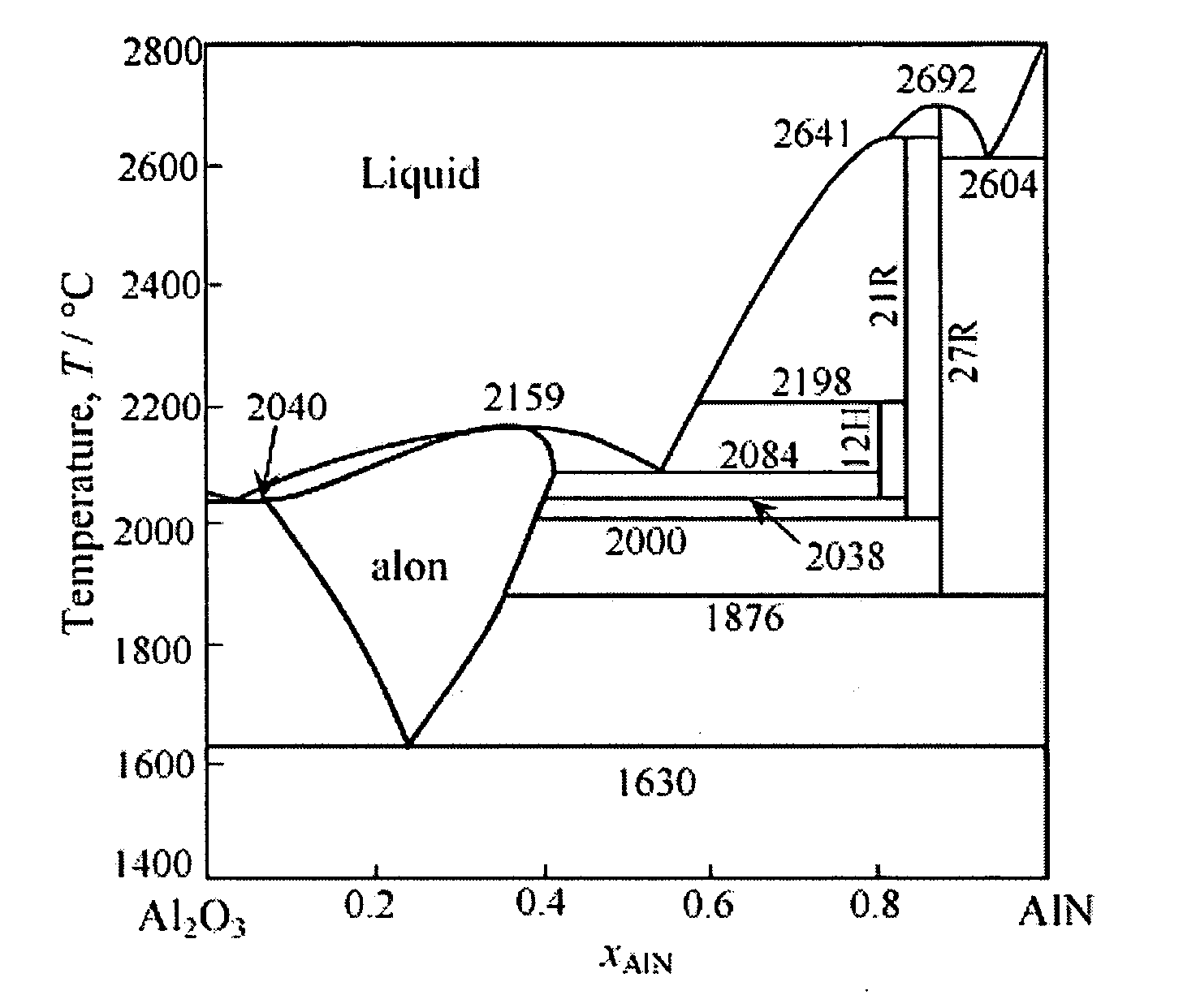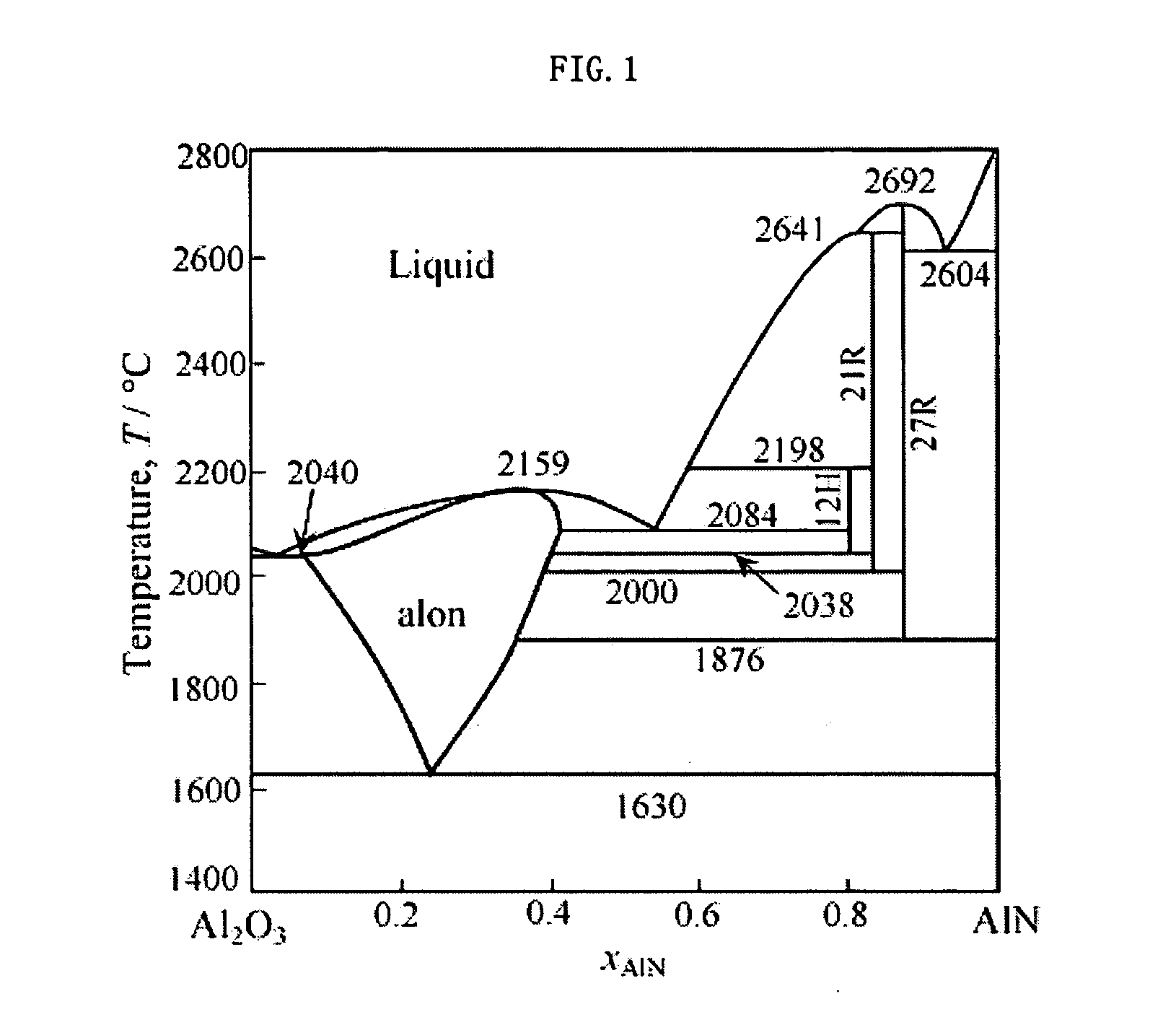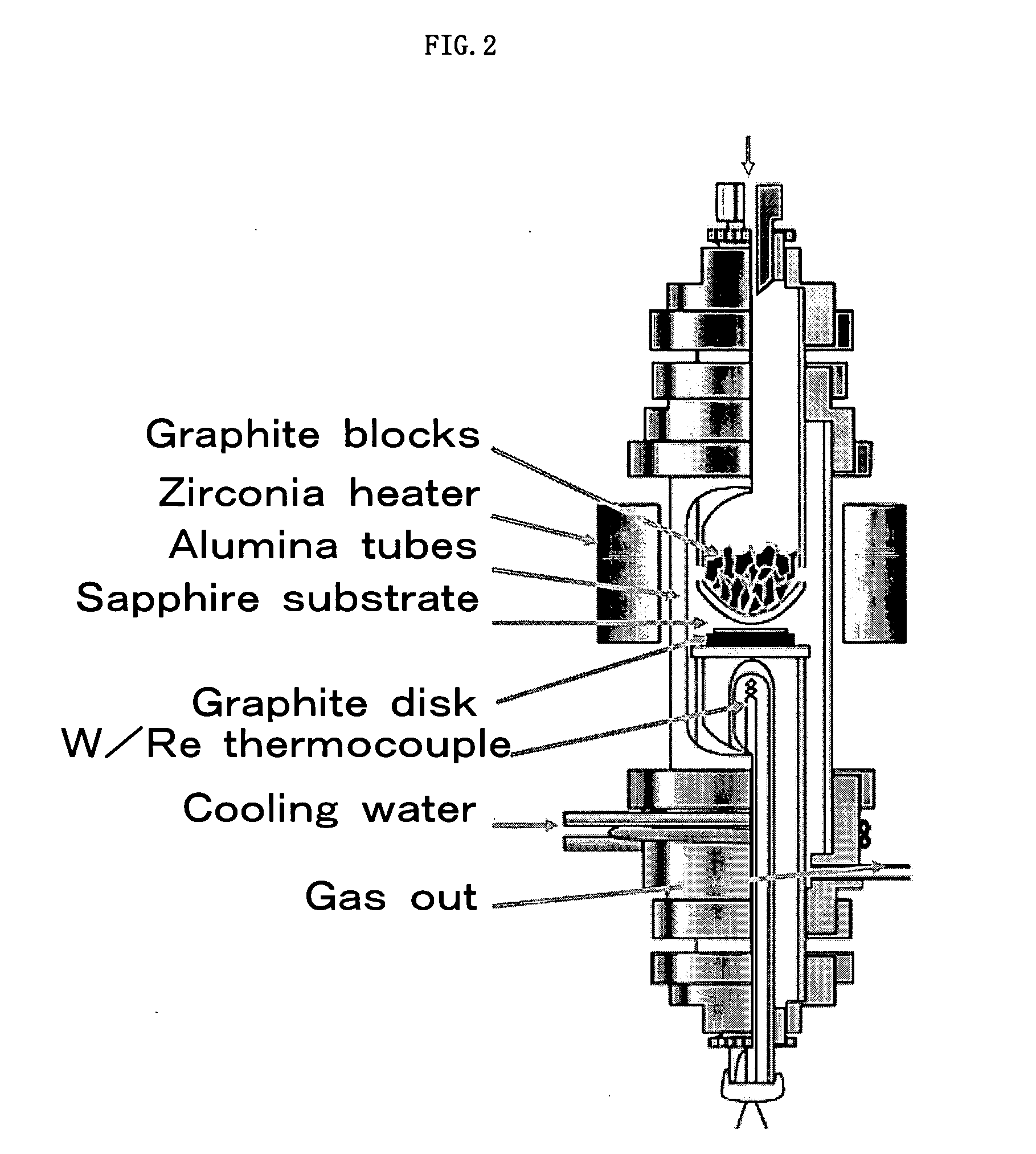Highly crystalline aluminum nitride multi-layered substrate and production process thereof
a technology of aluminum nitride and multi-layered substrate, which is applied in the direction of solid-state diffusion coating, after-treatment details, superimposed coating process, etc., can solve the problems of large distortion at the bonding boundary, difficult to obtain homogeneous thin films without defects, and difficult to obtain group iii nitride thin films with few defects, etc., to achieve excellent crystallinity, low dislocation density, and low dislocation density
- Summary
- Abstract
- Description
- Claims
- Application Information
AI Technical Summary
Benefits of technology
Problems solved by technology
Method used
Image
Examples
example 1
An AlN film and an alon layer were formed by nitriding a sapphire substrate with an N2—CO mixed gas and graphite at 1,690° C. in the reactor shown in FIG. 2. An alumina base was installed at the center of an alumina reaction tube, and a graphite disk (purity of 99.999%, 15 mm in diameter×2.5 mm) and a sapphire substrate (12.5 mm in diameter×0.33 mm) whose surface crystal plane was the (11-20) plane, face A, were mounted on the base. The sapphire substrate before a reaction had a surface roughness Ra of less than 1 nm and a half-value width of its rocking curve of 56 arcsec. A one-end closed pipe having four 2 mm-diameter holes in the bottom in a horizontal direction was inserted above the sapphire substrate, 5.0 g of graphite blocks (purity of 99.999%) were filled in the pipe, and a mixed gas to be introduced passed through this graphite layer to reach the sample.
The inside of the reaction tube was evacuated with a rotary pump to completely remove water in the tube and completely...
example 2
An AlN film and an alon layer were formed by nitriding a sapphire substrate with a N2—CO mixed gas and graphite at 1,660° C. in the reactor shown in FIG. 2. The details of the reactor were the same as in Example 1 and a mixed gas having a partial pressure ratio of carbon monoxide (CO) to nitrogen (N2) of 0.1 was introduced to maintain the inside of the reactor at 1,660° C. for 24 hours.
The crystal orientation relationship between the obtained alon layer and AlN film was completely the same as in Example 1.
FIG. 9 shows graphs of ω-mode rocking curves. It is understood from the graphs that as the half-value width of the alon layer was 4,320 arcsec and the half-value width of AlN was 281 arcsec, they have high crystallinity. The half-value width of the sapphire substrate after the reaction was 241 arcsec.
FIG. 10 is a TEM image of the cross sections of the AlN film and alon layer formed on the face-A sapphire substrate obtained in this example. It is understood from this image and ...
PUM
| Property | Measurement | Unit |
|---|---|---|
| Ra | aaaaa | aaaaa |
| equilibrium partial pressure | aaaaa | aaaaa |
| equilibrium partial pressure | aaaaa | aaaaa |
Abstract
Description
Claims
Application Information
 Login to View More
Login to View More - R&D
- Intellectual Property
- Life Sciences
- Materials
- Tech Scout
- Unparalleled Data Quality
- Higher Quality Content
- 60% Fewer Hallucinations
Browse by: Latest US Patents, China's latest patents, Technical Efficacy Thesaurus, Application Domain, Technology Topic, Popular Technical Reports.
© 2025 PatSnap. All rights reserved.Legal|Privacy policy|Modern Slavery Act Transparency Statement|Sitemap|About US| Contact US: help@patsnap.com



